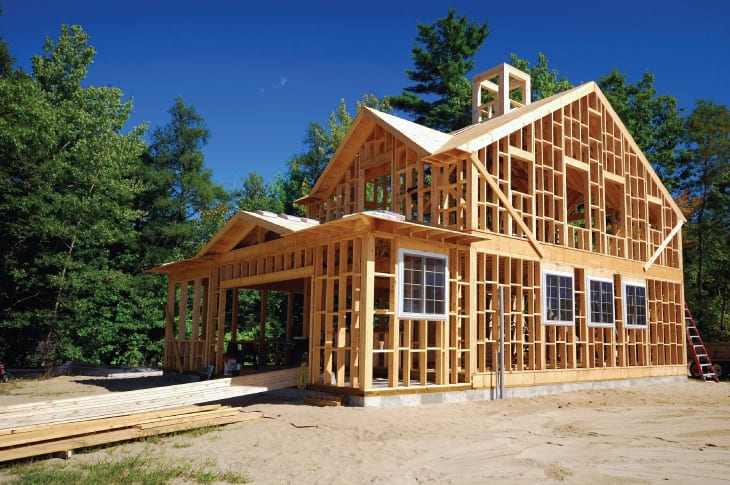What is an Outside Drainage Channel?
Outside drainage channels are integral elements in both residential and commercial drainage systems, playing a key role in managing water flow around properties. These channels are designed to collect and redirect excess water, which can be due to heavy rain, snowmelt, or regular irrigation. They are essential in preventing water accumulation that can cause flooding, soil erosion, and damage to building foundations.
In this article, we’ll explore the aspects of outside drainage channels, including their types, importance, installation process, maintenance, and common problems.
Key Takeaways:
- Outside drain channels are critical for preventing water accumulation and protecting building foundations.
- There are various types of outside drain channels, each suited to different drainage needs.
- Regular maintenance of these channels is essential for their optimal performance.
- The installation of drain channels varies based on their type and the location where they are being installed.
Types of Outside Drain Channels
Linear Drain Channels
Linear drain channels, also known as trench drains, are designed as long and narrow channels. They are typically installed in the ground to collect and transport water, commonly found in areas like driveways, patios, and sidewalks. These channels are characterized by their long, narrow design, making them suitable for areas where water flows in a linear direction.
Point Drain Channels
Point drain channels are designed for installation at specific points where water tends to accumulate. They are a common feature in landscapes and garden areas, effectively collecting water at these specific points. This makes them ideal for use in gardens and landscaped areas where localized water collection is needed.
Importance of Outside Drain Channels
Preventing Water Damage
Outside drain channels serve the primary function of preventing water damage to buildings and landscapes. They achieve this by redirecting excess water away from structures, thereby protecting the foundations from water damage. This redirection of water is crucial in maintaining the structural integrity of buildings.
Enhancing Safety
These drain channels also play a significant role in enhancing safety by removing water from walkways and driveways. This reduction in water accumulation minimizes the risk of slips and falls, keeps walkways dry, and improves driving conditions on driveways.
Installation Process
Assessing the Site
The installation of an outside drain channel begins with a thorough site assessment. This involves understanding the topography, including the slope and layout of the area, and identifying where water accumulates or flows. This assessment is critical in determining the best type and location for the drain.
Choosing the Right Type
The effectiveness of a drain channel largely depends on choosing the right type. This choice should consider the size of the area and the volume of water expected to be managed. Larger areas may require more extensive drainage systems, and the expected water volume will dictate the capacity needed for the drainage system.
Installation
Once you have chosen the right type of drainage system, it can now be installed.
Maintenance of Drain Channels
The effective functioning of outside drain channels is contingent on regular maintenance. This involves cleaning and clearing the channels of debris and sediment, which can obstruct water flow. Regular removal of leaves and debris, along with sediment buildup clearing, is necessary. Additionally, inspecting the channels for damage over time is important. This includes checking for cracks or damage and ensuring that grates and covers are secure.
Common Problems and Solutions
Clogging
Clogging is a frequent issue with drain channels, often caused by leaves, dirt, and other debris. Regular cleaning and the installation of guards to prevent debris entry are effective solutions to this problem.
Structural Damage
Drain channels can also experience structural damage due to heavy traffic, weather, or age. To address this, damaged sections should be repaired or replaced, and more durable materials should be used in areas with high traffic.
Advanced Installation Guidelines
The installation of outside drain channels requires careful planning and execution. It begins with a detailed assessment of the landscape and climatic conditions. Understanding the average rainfall and water flow patterns in the area is crucial. The installation process often involves excavation, laying down of the drainage pipes or channels, ensuring proper slope for effective water flow, and then covering and securing the channels in place. It’s also important to consider the integration of these channels with the existing landscape or structures to ensure a seamless and effective drainage solution.
Enhanced Maintenance Techniques
For the long-term effectiveness of outside drain channels, enhanced maintenance techniques are essential. This includes conducting regular inspections, especially after heavy rainfall or storms, to check for any signs of blockage or damage. In areas with heavy foliage, it may be necessary to increase the frequency of cleaning to prevent clogging from leaves and twigs. For channels located in areas with heavy traffic, checking for structural integrity is key. Sometimes, it may be necessary to employ professional cleaning services to ensure that the channels are thoroughly cleaned and maintained.
Addressing Common Issues
Some common issues with outside drain channels include root intrusion from nearby vegetation, which can cause blockages or damage to the channels. To address this, it’s important to regularly monitor and manage the growth of roots near the drainage system. Another issue is the buildup of minerals or other materials which can reduce the efficiency of the channels. Regular flushing and cleaning can help prevent this buildup.
Summary Of What is an Outside Drain Channel
This comprehensive guide on outside drain channels aims to provide a thorough understanding of their importance, types, installation, maintenance, and common issues. Whether for residential or commercial properties, properly functioning outside drain channels are essential for effective water management and the prevention of water-related damages. By following the guidelines and tips provided, property owners can ensure that their drainage systems operate efficiently and effectively for years to come.







